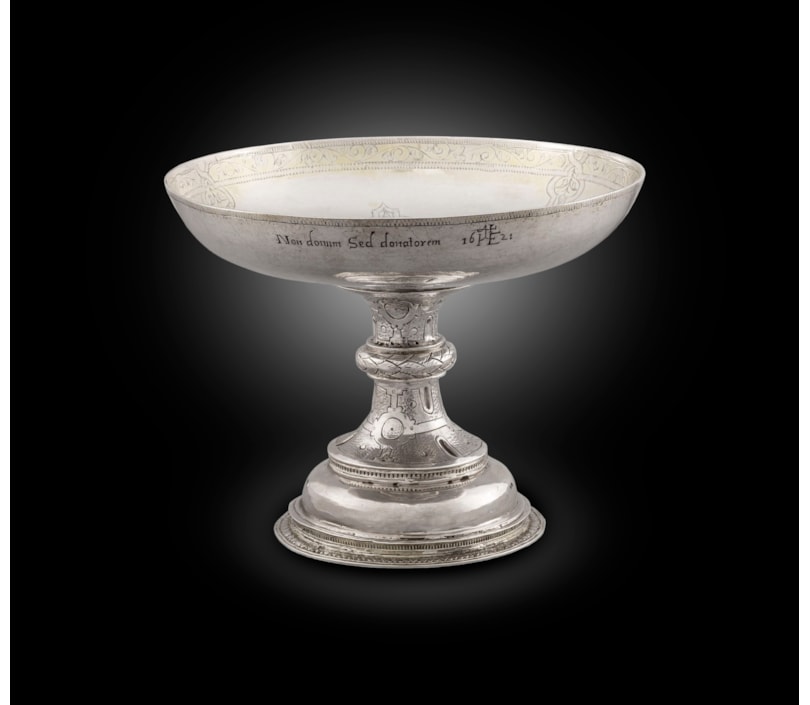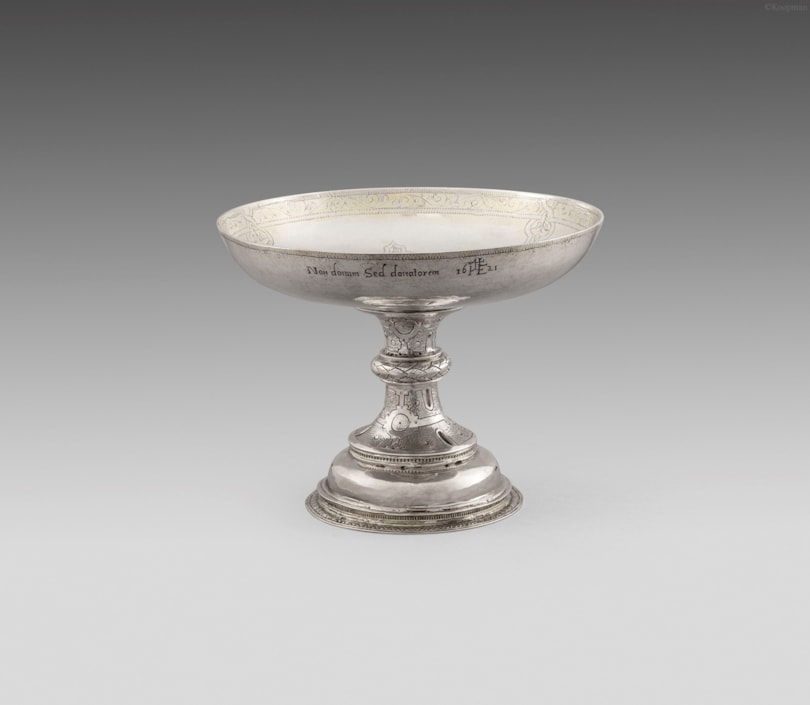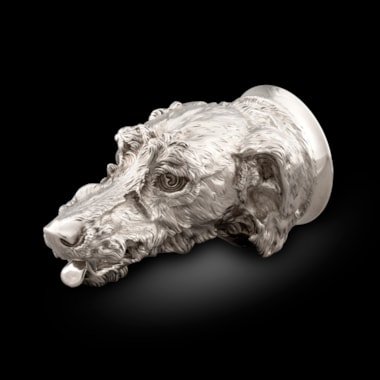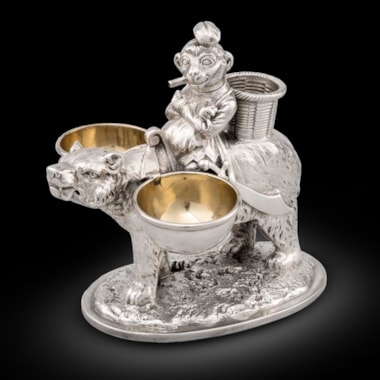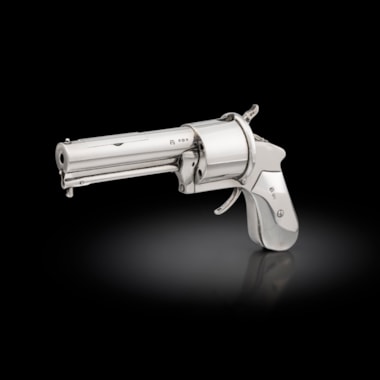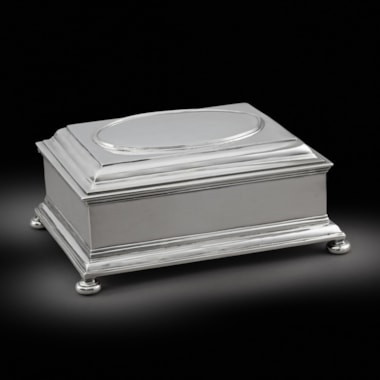The baluster stem on slightly domed circular foot, chased with stylised leaf border, strapwork, pellets and foliage on a textured ground, the bowl with upcurved rim, with laurel, wriggle-work and foliate scroll borders and stylised foliage, the centre with a circular portrait bust medallion of a warrior in a plumed helmet, the exterior of the bowl with a presentation inscription Non donum sed donatoremand with monogram “IE” and dated 1621.
George Weare Brainkenridge was born in Hanover County, Virginia, where his father had settled as a planter and merchant and had married a Virginian. He was sent to England to school in Bristol, near the home of his grandmother. While returning to England in 1793 his family were shipwrecked in the Bristol Channel and his mother and sisters shortly thereafter died of scarlet fever; his father, who survived these tragedies, went into business in Bristol as Dry Salters with a relative, taking the younger George with him. In 1800 George Weare married Mary Bush. He continued in the family firm after his father's retirement two years later and the business developed into what the Gentleman's Magazine described as 'a leading and long established West India firm'. The prosperity of his affairs allowed George Weare to indulge his interests in medieval antiquity, the history of Bristol, geology and fossils, finally retiring at the age of forty-six to devote himself to his collections and buying Broomwell House in 1823. This retirement lasted for thirty-six years and he died in 1856 at the age of eighty-one, a renowned antiquary, having amassed one of the largest collections of antiquities of general and local interest in the West of England.
Other examples of this form of tazza are found in Germany and Holland and variants may also be found in glass. They are sometimes described as wine cups but evidence such as that found in contemporary paintings would point to a likely use as spice dishes; they might have a cover or perhaps one cover between a set. Timothy Schroeder, in The Gilbert Collection of Gold and Silver, 1988, p.62-65, discusses the history of this form with illustrations similar to the present example: 'This type of standing bowl, traditionally known as a tazza, was probably used as a wine cup or spice plate. The 1574 inventory of the Royal Jewel House lists a number of items apparently similar in appearance to this.... many of the bowls mentioned in the inventory were equipped with covers, in contrast to only six of the 138 spice plates.' The Museum of Fine Arts, Boston, has a pair of silver-gilt tazze of 1582/3, called standing bowls, of similar form to the present example, their centres set with busts in profile (see Ellenor Alcorn, English Silver in the Museum of Fine Arts, Boston, vol.I, 1979, no.13, p.63); Alderman of Boston, England, Christopher Audley, in his will proved in 1576, intended to provide for the 'Mayor and his successors six drinking pottes to the value of twenty markes' two of which were the Museum's pair, eventually supplied by his brother. Other examples include a tazza of 1573 exhibited at Queen Charlotte's Loan Exhibition of Old Silver at Seaford House, London, 1929, the collection of John Ramsden, Bt., no.66, plate XX.
George Weare Braikenridge (1775-1856), Broomwell House, Brislington, nr. Bristol and by descent to his son
The Rev. George Weare Braikenridge and by descent to his son
Clevedon W. Jerdone Braikenridge
The Braikenridge Collection of Mediaeval Works of Art; Christie's, London, 27 February 1908, lot 53
Anonymous sale; Christie's, London, 13 June 1918, lot 84
Anonymous sale; Sotheby's, London, 8 July 1936, lot 145
The Wanamaker Family, Philadelphia
The Rosenbach Company, Philadelphia
Lessing Julius Rosenwald (1891-1979)
A Philadelphia Private Collection; Sotheby's, New York, 6 April 1989, lot 248
Christie’s London 25th November 2003 lot 336
The David Little Collection of Early silver item 8, page 126
E.L. Lowes, Chats on Old Silver, London, 1909, p.190, illustrated. The Glory of the Goldsmith, Magnificent Gold and Silver from the Al-Tajir Collection, Christie's, 1989, no. 31
You May Also Like



































































